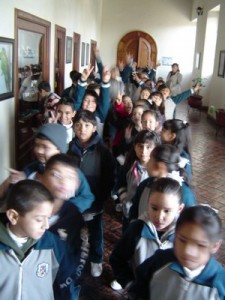
We had a Celebrate Urban Birds festival during the last week of January, using CUBs materials. The Nicolas Bravo School joined us in the celebration and we enjoyed sharing our kits with them!

The Museum also acts as a key connection between society and ornithologists (bird scientists). Birds are a big part of our work in environmental education, since they can spark curiosity and interest in both children and adults.
In the five rooms that make up the Museum, we have sections assigned certain themes, such as “what birds are,” “where birds live,” “typical birds,” “birds of Coahuila,” and the “end of the millennium” room. We also dedicate special spaces to forest birds, desert birds, and a song-room; these different areas allow visitors to truly experience the diverse lives of birds.

Now, with the Itinerant Museum program that we are conducting throughout the state of Coahuila, we are sharing the unique and enriching experience of learning about Mexican birds, using knowledge to value and conserve this integral group of animals in our environment.

To learn more about our Museum and its programs, please visit our website or check out our blog!